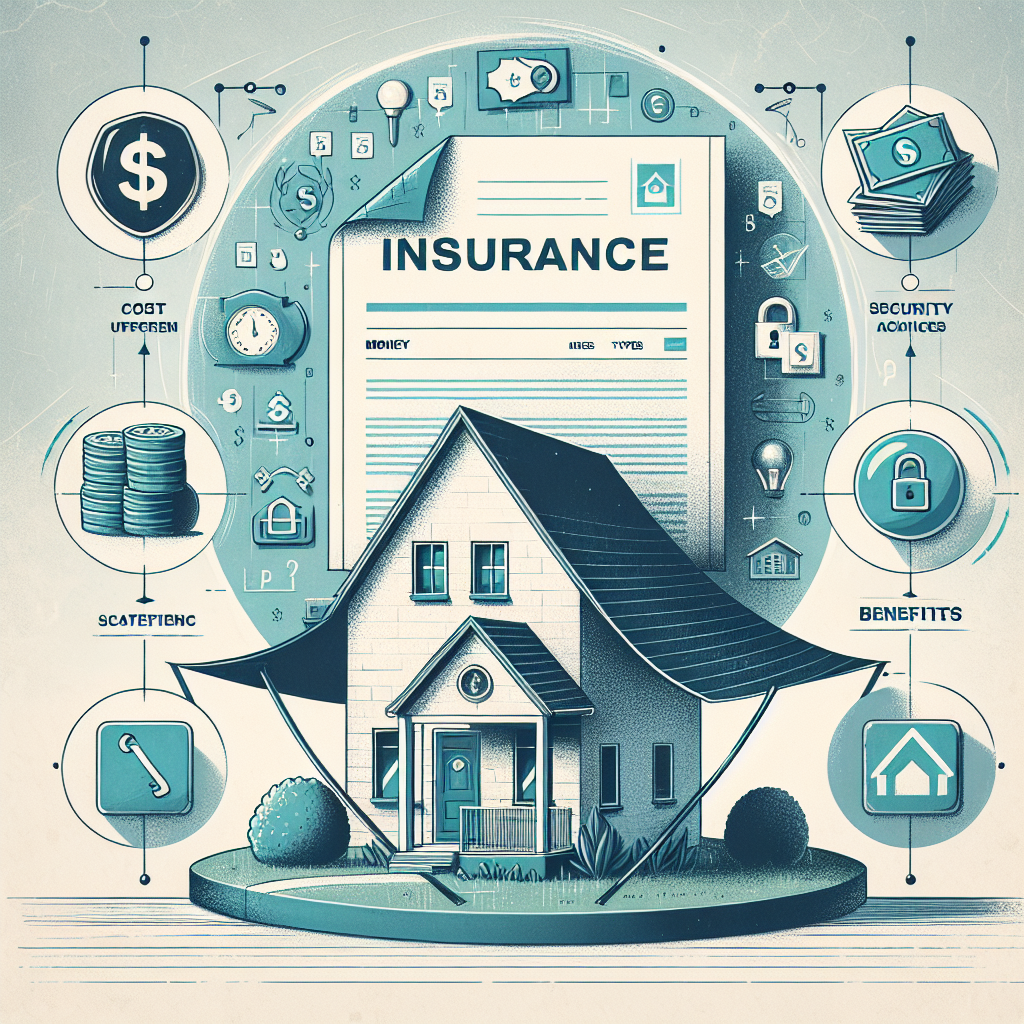Filed under Home Insurance on
Loss of Use Home Insurance Coverage Guide

When a disaster forces you out of your home, the bills don’t stop. In fact, they often rise. This Loss of Use Home Insurance Coverage Guide breaks down how your policy can help pay for temporary living costs, how to document those expenses, and what limits to expect so you’re not left paying more than you must at the worst possible time.
What “Loss of Use” Means in Home Insurance
“Loss of Use” is the part of a homeowners, renters, or condo policy that helps cover your extra living costs when a covered claim makes your home uninhabitable. In standard ISO-based policies, it’s labeled Coverage D and typically includes three components:
- Additional Living Expense (ALE): The increase in your normal cost of living so you can maintain a comparable lifestyle elsewhere while repairs are made.
- Fair Rental Value: Income you lose when a rental unit at the insured location can’t be occupied due to a covered loss.
- Prohibited Use (Civil Authority): If authorities bar access to your home (for example, post-wildfire or hurricane evacuation), limited ALE may apply for a set number of days.
Crucially, ALE covers the difference between your “normal” spending and your temporary spending. If your mortgage continues but you must rent an apartment while repairs proceed, the rent is generally covered because it’s an additional cost, not a replacement for your mortgage.
Throughout this Loss of Use Home Insurance Coverage Guide, you’ll see that the details matter—limits, time frames, and documentation can dramatically change your outcome.
What Loss of Use Does and Doesn’t Pay For
Commonly Covered (subject to policy terms)
- Temporary housing: Hotels, short-term rentals, or corporate apartments, including taxes and certain lodging fees.
- Meals: The increase above your typical grocery/restaurant spending if you lack a full kitchen.
- Transportation: Extra mileage, rideshares, parking, or public transit if your temporary location changes your commute or school route.
- Utilities and services: Incremental costs for electricity, water, internet, or temporary mail forwarding.
- Pet boarding and kenneling: When your temporary housing won’t accept pets or you need boarding during displacement.
- Laundry: Coin-op or laundry service if you can’t use your machines.
- Storage and moving: Packing supplies, movers, and storage unit fees for undamaged property.
- Fair rental value: Lost rent from a unit you normally lease to others when a covered loss renders it uninhabitable.
Commonly Not Covered
- Unrelated upgrades: Nicer accommodations or luxury add-ons beyond a “like-for-like” standard of living.
- Long-term improvements: Permanent renovations unrelated to the loss.
- Losses not caused by a covered peril: Flood (without flood insurance), wear and tear, or earth movement (without proper endorsements).
- Business losses: Income from short-term rentals or home businesses may be excluded without specific endorsements.
- Expenses without documentation: Receipts and records are key; unsubstantiated costs are commonly denied.
Real-World Scenarios
- Kitchen fire: A grease fire damages the main floor, leaving heavy smoke damage. You move into a furnished apartment for three months. The insurer reimburses the rent, higher utility bills, laundry services, and the difference between your restaurant spending and normal grocery budget until your kitchen is usable.
- Burst pipe in winter: Water saturates floors and drywall. Hotel for 10 days, then a short-term rental for eight weeks. Coverage includes the hotel, pet boarding for the first week, movers and storage for salvaged belongings, and increased commuting costs.
- Wildfire evacuation order: Authorities close your neighborhood for 12 days. You stay with family for free, but your policy still reimburses incremental expenses like extra groceries and gas from a longer commute, all within the civil authority time cap.
Policy Limits, Time Caps, and How They’re Calculated
Limits vary by policy type and insurer. ISO-based standards commonly look like this, though you must check your declarations page:
- Homeowners (HO-3/HO-5): Loss of Use often equals 20%–30% of Coverage A (Dwelling). Many standard forms use 30%.
- Renters (HO-4): Typically 40%–50% of Coverage C (Personal Property); 50% is common on some forms.
- Condo (HO-6): Often 30%–50% of Coverage C; practices vary by insurer and state.
Two dimensions govern your benefits:
- Dollar limit: The maximum Loss of Use payout.
- Time limit: The “reasonable period” to repair or replace the home or relocate permanently. Civil authority coverage often has a shorter, fixed window (frequently 14 days, though some insurers extend it in catastrophes).
A key point from industry standards: you’re entitled to maintain your household’s normal standard, not upgrade it. “Comparable” means similar size, amenities, and distance from work/school where feasible. When housing markets are tight—common after wildfires, hurricanes, or severe convective storms—your insurer should consider local availability and market rates when determining what’s reasonable.
Our Loss of Use Home Insurance Coverage Guide also stresses the “period of restoration.” Carriers generally pay until the home is repaired or you relocate permanently, subject to limits. Repair timelines depend on permit backlogs, labor availability, materials, and supply chains—factors that, according to the Insurance Information Institute and multiple catastrophe reports, have stretched rebuild durations to 12–24 months for large-loss events in some regions.
How Reimbursement Works in Practice
Many insurers issue an initial ALE advance after a large covered loss so you can secure a hotel or short-term rental quickly. After that, payments are typically:
- Reimbursement-based: You submit receipts and a log that shows the incremental costs above your normal baseline.
- Periodic: Weekly or monthly disbursements aligned with your housing invoices.
- Direct pay: In some cases, carriers pay vendors/hotels directly through preferred networks.
Deductibles usually apply to property damage, not ALE specifically, yet practices vary. Confirm whether a single deductible applies to the entire claim or whether ALE is treated separately by your carrier. Either way, meticulous documentation is your best ally.
Proving the “Incremental” Piece
- Establish your normal budget: Pull three to six months of bank or card statements to set baselines for groceries, utilities, gas, and dining out.
- Compare apples to apples: If your family normally spends $800 on groceries and now spends $1,200 in restaurants/higher-cost groceries due to limited cooking, the $400 difference may be reimbursable.
- Track mileage: Log miles to work, school, and medical appointments if your temporary location increases travel.
- Capture everything: Save receipts, hotel folios, utility bills, pet boarding invoices, moving quotes, and storage receipts.
Landlords, House Hackers, and Short-Term Rental Hosts
If you rent out part or all of your property, clarify which piece of Coverage D applies:
- Fair rental value: Pays the rent you would have collected from a tenant if a covered loss makes the unit uninhabitable. It usually excludes utilities you would have continued to pay.
- Additional living expense: Applies to the unit you occupy personally.
Short-term rental income often falls into a gray area. Many homeowners policies limit or exclude business activity. If you regularly host on platforms like Airbnb or Vrbo, ask your agent about a home-sharing or landlord endorsement, or a dedicated landlord/short-term rental policy that explicitly insures loss of rents and liability. Failing to address this before a loss can result in denied income claims.
Renters and Condo Owners: Special Considerations
Renters (HO-4) typically have robust ALE relative to their personal property limit. If a fire in your building displaces you, ALE can cover a hotel or apartment at a comparable standard. Your landlord’s policy generally doesn’t cover your living expenses or personal property.
Condo (HO-6) owners navigate an added layer: the association’s master policy. The master may cover the building shell and common areas, while your policy covers interior finishes and personal property. If building damage and repair timelines are under the association’s control, coordinate closely with the property manager and your adjuster to update the period of restoration. Some condo policies provide loss assessment coverage; this is separate from ALE and may help with special assessments levied by the association due to covered perils.
As a practical, renter-friendly aside from this Loss of Use Home Insurance Coverage Guide: even if you stay with family or friends at no lodging cost, many policies still reimburse your additional commuting, meal, or utility costs, subject to proof and limits.
Common Misunderstandings and Exclusions
- “My mortgage should offset my ALE.” Not true. Your mortgage continues, and ALE covers the additional cost of temporary housing. Insurers don’t subtract your mortgage from temporary rent.
- “Civil authority lasts as long as the order.” Policies usually cap this benefit at a set number of days, often 14, even if the order continues longer.
- “Everything is covered if I’m displaced.” Only covered perils trigger ALE. Flood requires separate flood insurance. Earthquake typically requires an endorsement or separate policy.
- “I can choose any luxury rental.” The standard is “comparable living,” not an upgrade. If local supply forces higher costs, work with your adjuster to document market constraints.
- “I don’t need receipts.” You do. Without detailed records, adjusters have little to approve.
- “My home business or short-term rental income is automatically covered.” Not by default. You may need add-ons or a different policy form.
How Much Loss of Use Coverage Do You Need?
Start with a realistic monthly estimate of your displacement costs, then compare it to your policy’s dollar and time caps.
A Simple Estimation Exercise
- Baseline monthly costs: Mortgage/rent, utilities, groceries, commuting, pet care.
- Temporary scenario: Expected rent/hotel, increased utilities, restaurant spending, added commuting, storage, pet boarding.
- Subtract baseline from temporary: This difference is your estimated ALE per month.
- Multiply by an expected timeframe: For a major rebuild, 12–18 months is not uncommon in high-demand areas post-catastrophe.
- Compare to your policy’s ALE limit: If the total exceeds your limit, ask about increasing limits or endorsements before a loss.
For example, if your incremental cost is $2,000 per month and a severe event could displace you for 12 months, you’d want at least $24,000 in ALE. If your Coverage D is set at 30% of a $250,000 dwelling limit, you have $75,000—adequate for this scenario. In high-cost metro areas, however, ALE can be absorbed quickly by rent and taxes alone. Adjust accordingly.
Cost Trends and What They Mean for You
Recent years have brought an uptick in catastrophe frequency and severity—from wildfires in the West to severe convective storms in the Midwest and South. Industry sources, including the Insurance Information Institute and catastrophe modeling firms, note supply chain disruptions, labor shortages, and materials inflation that extend repair timelines and boost temporary housing costs. In some states, carriers have responded by adjusting Loss of Use caps, enforcing stricter documentation, or using preferred vendor networks to control costs.
This Loss of Use Home Insurance Coverage Guide emphasizes planning ahead: check whether your policy imposes a strict 12-month ALE limit, even if your dollar limit remains. Consider endorsements that raise ALE limits, and clarify if your insurer evaluates “reasonable repair time” based on local market conditions, not generic timelines.
Tips to Maximize Your Benefits (Without Headaches)
- Call early: Report the claim quickly and request an ALE advance if you need immediate lodging.
- Ask for preferred vendors: Insurers often have hotel, housing, and moving partners with negotiated rates—helpful in tight markets.
- Document habitability: Keep photos, inspection reports, or contractor letters that explain why the home isn’t livable.
- Keep a running log: Date, cost, reason, and whether the expense is incremental. Update weekly.
- Stay comparable: Select housing that mirrors your prior standard to avoid disputes over “upgrades.”
- Be transparent: Share your baseline budget and calculations with the adjuster to streamline approvals.
- Check civil authority rules: Note any caps and confirm whether evacuation orders qualify under your policy language.
- Coordinate with others: If the landlord, HOA, or municipality is involved, loop in your adjuster on timelines and access issues.
- Revisit limits mid-claim: If repairs drag on, ask about extensions or alternatives before hitting caps.
- Protect against fraud: Use well-reviewed housing options and be wary of post-disaster scams targeting displaced families.
Use this Loss of Use Home Insurance Coverage Guide as a checklist: when in doubt, ask your adjuster in writing and save the response. Clarity beats assumptions.
How to File a Loss of Use Claim: Step-by-Step
- Safety first: Secure the property and your family. If needed, arrange emergency board-up or water mitigation.
- Contact your insurer: Report the loss and ask for ALE guidance and any initial advance.
- Establish your baseline: Gather recent statements to show normal monthly expenses.
- Find temporary housing: Share options and costs with your adjuster for pre-approval when possible.
- Track every expense: Use a spreadsheet or app. Photograph receipts.
- Communicate frequently: Provide weekly updates, especially on housing transitions and contractor timelines.
- Review estimates: Ensure contractor repair timelines are realistic; they influence ALE duration.
- Escalate if needed: If disputes arise, request a supervisor review, consult your agent, or consider a public adjuster or attorney for complex claims.
- Close out cleanly: Submit a final ledger of expenses, return any unused housing deposits, and confirm benefit totals.
Frequently Asked Questions
Is Loss of Use subject to my deductible?
Typically, ALE doesn’t have a separate deductible, but your overall claim may. Insurer practices differ—confirm with your adjuster.
Can I choose any hotel or rental?
Yes, but choose comparable accommodations. If you pick premium lodging without market necessity, the insurer may only reimburse a reasonable amount.
What if I stay with family for free?
You may still claim incremental costs like groceries, commuting, and utilities, but you’ll need clear documentation.
How long will coverage last?
Until repairs make the home habitable or you relocate permanently, subject to dollar/time limits. Civil authority coverage usually has a shorter cap.
Does ALE cover my mortgage?
No. It covers the extra costs of living elsewhere. Your mortgage continues separately.
Are meals always covered?
Only the increase above your normal food budget, usually when you lack a full kitchen.
What about floods or earthquakes?
Those perils require flood insurance or an earthquake endorsement/policy. Without them, ALE likely won’t apply.
Is ALE taxable?
Generally, no. For landlords, fair rental value may have tax implications. Consult a tax professional.
In this Loss of Use Home Insurance Coverage Guide, we answer common questions, but policy wording controls. Always read your declarations and endorsements.
A Quick Checklist: Documents to Keep
- Policy declarations page and endorsements
- Adjuster contact info and claim number
- Photos/video of damage and habitability issues
- Contractor estimates and repair timelines
- Hotel folios, rental agreements, and deposits
- Receipts for meals, utilities, laundry, storage, pet boarding, and mileage logs
- Baseline budget records for the prior three to six months
- Written approvals from your adjuster for major temporary housing decisions
Expert Tips to Avoid Coverage Gaps Before a Loss
- Verify your Coverage D limit: Ask your agent to show you the percentage and estimated dollar amount.
- Increase limits if needed: Especially in high-cost housing markets or if you have a large household or pets.
- Consider endorsements: Extended ALE coverage, ordinance or law coverage (for code upgrades), and appropriate riders for home-sharing or business use.
- Inventory your property: A digital home inventory speeds claims and helps you avoid underinsurance.
- Review every renewal: Market conditions change. Adjust your dwelling and ALE limits accordingly.
Coordination With Disaster Assistance
After federally declared disasters, FEMA and local programs may offer housing help. Typically, insurance is primary; assistance may be reduced by amounts you receive from your insurer to prevent double recovery. Keep separate records for insurance and any public aid, and share updates with both to avoid delays.
Working With Your Adjuster
The adjuster’s job is to verify your loss, confirm coverage, and help align payments with the policy. A collaborative approach goes a long way:
- Be proactive: Suggest viable housing options and share market research if inventory is tight.
- Be specific: “Comparable” should be tied to square footage, bedrooms, school district, and commute—not just price.
- Be persistent: If the first option isn’t approved, ask what documentation is missing and provide alternatives.
Key Takeaways
- Loss of Use keeps you financially afloat by covering the additional costs of living elsewhere after a covered loss.
- Know your caps: Both dollar limits and time restrictions (especially for civil authority) can curtail benefits.
- Documentation wins claims: Baselines, receipts, and clear logs simplify approvals.
- Plan ahead: Adjust limits and endorsements to fit your market and household needs before a disaster strikes.
Bottom Line
Displacement after a disaster is stressful, but clarity on coverage can turn a chaotic process into a manageable one. By understanding how Additional Living Expense, fair rental value, and civil authority benefits work—and by documenting thoroughly—you can maintain your standard of living without exhausting savings. Use this Loss of Use Home Insurance Coverage Guide to evaluate your current limits, gather the right records, and align expectations with your insurer. With preparation and clear communication, you’ll navigate temporary housing confidently and focus on getting home again.





